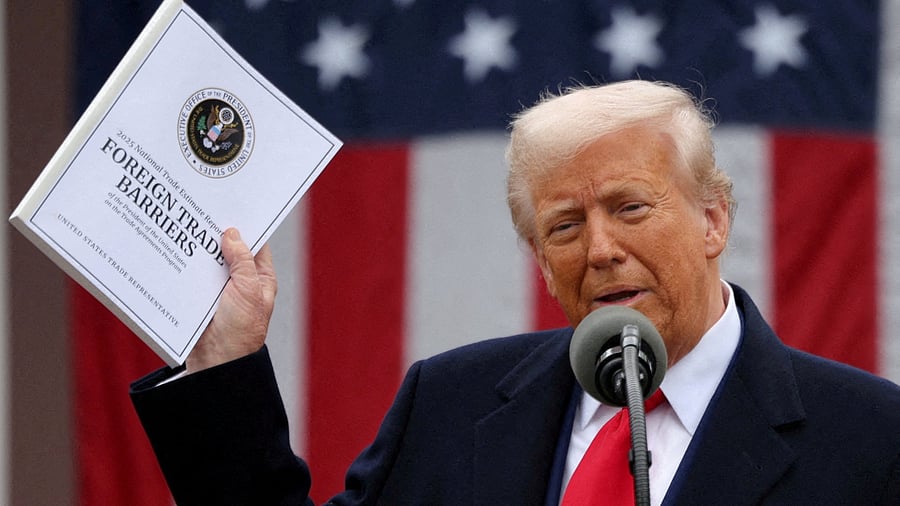
US President Donald Trump.
Credit: Reuters Photo
Bengaluru: A day after Trump announced his avalanche of reciprocal tariffs, trade observers stressed on India’s need to focus on negotiations, without committing to things that affect India’s interests in the long run.
“The Trump phenomenon is a short-term blip, although India can consider reviewing tariffs in various sectors, subject to how the US administration reciprocates to it,” said Ajay Srivastava, Founder of Global Trade Research Initiative (GTRI) in a webinar organised by PL Capital on Friday.
The China plus one strategy is expected to mark a positive turnaround in the electronics sector, even though India has been traditionally weak on that front. “Machinery and electronics are the largest sectors in terms of global trade volumes, however, our electronics exports have zoomed up (only) in the past five years after the production-linked incentive (PLI) scheme. Although the contribution is still less, it would be good if we keep on adding domestic value,” Srivastava added.
Yet, experts remain wary of the tariffs as uncertainty prevails as the US administration has talked of reviewing them later, possibly changing them. Participants at the webinar also examined India’s roadmap from here, which could also be cutting tariffs on non-agricultural and non-auto exports, depending upon the reciprocity by the US administration.
According to a report by CareEdge Ratings out on Friday, the reciprocal tariff’s impact is expected to be largely neutral for electronics, textiles, agricultural products, chemicals, and automobiles and parts.
However, it would be negative for gems and jewellery, with the prevailing weighted average tariff of 3.17% being significantly enhanced to 26%. Being a discretionary item for consumers, such a high tariff is expected to have an adverse impact on both demand and pricing, especially in the polished diamond segment, which is already under pressure from lab-grown diamonds.
The pharmaceutical sector has been kept out of the purview of reciprocal tariffs by the US, will face no immediate impact. But the US administration on Thursday indicated that this may not remain so. The CareEdge report noted that even if tariffs are imposed, the sector should be well-positioned to pass them on significantly due to its inherent competitive strengths.
Electronics will also be a key sector to watch out for as the imposition of reciprocal tariffs could impact demand and pricing, as production of these goods can be shifted to other sources, especially China, which is currently a major exporter of electronics to the US. However, higher reciprocal tariffs on China would mean a neutral impact for India’s electronics exports. Additionally, smartphones are a key constituent of India's electronics exports, and their manufacturing could shift to the US due to limited value addition in India, which would inevitably tell on India’s electronics exports.